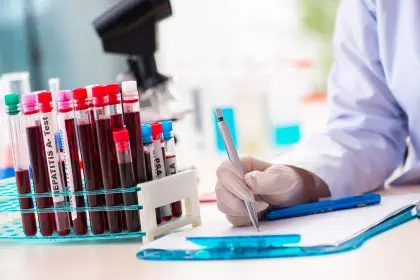Hepatitis C stands as one of the most destructive viral infections affecting the human liver, silently wreaking havoc on this vital organ for years or even decades before symptoms become apparent. This insidious virus infiltrates liver cells, establishing a chronic infection that progressively damages liver tissue through multiple mechanisms that can ultimately lead to complete organ failure.
The liver serves as the body’s primary detoxification center, processing nutrients, manufacturing essential proteins, and filtering harmful substances from the blood. When hepatitis C virus invades this critical organ, it disrupts these fundamental processes while triggering a cascade of destructive events that compound over time. Understanding how this viral infection systematically destroys liver function provides crucial insight into why early detection and treatment remain so important.
Unlike acute infections that cause immediate, obvious symptoms, hepatitis C operates as a master of disguise, often remaining undetected for 10 to 30 years while steadily eroding liver health. This prolonged silent phase allows extensive damage to accumulate before individuals realize they carry the infection, making the virus particularly dangerous and difficult to combat effectively.
1. Chronic inflammation sets the stage for destruction
Hepatitis C virus triggers relentless inflammation within liver tissue as the immune system attempts to eliminate the foreign invader. This inflammatory response, while initially protective, becomes chronically activated when the virus establishes persistent infection, creating a state of continuous cellular stress that damages healthy liver tissue.
The inflammatory cascade involves multiple immune system components that release harmful chemicals intended to destroy infected cells. However, these same inflammatory mediators damage surrounding healthy liver cells, creating collateral destruction that extends far beyond the initially infected areas. This widespread inflammation forms the foundation for all subsequent liver damage.
White blood cells flood into liver tissue during chronic inflammation, releasing toxic substances that break down cellular structures and interfere with normal liver function. The constant presence of these inflammatory cells creates an environment hostile to liver cell survival and regeneration, preventing the organ from maintaining its normal repair processes.
Inflammatory proteins circulating throughout the liver tissue cause blood vessels to become leaky and unstable. This vascular damage impairs oxygen and nutrient delivery to liver cells while allowing harmful substances to accumulate in liver tissue. The compromised blood flow accelerates cellular death and prevents effective waste removal.
The chronic inflammatory state also disrupts the liver’s ability to produce essential proteins, including those responsible for blood clotting and immune function. This protein deficiency creates systemic effects that extend beyond the liver itself, affecting multiple organ systems throughout the body.
2. Direct viral attack on liver cells
Hepatitis C virus specifically targets liver cells, called hepatocytes, by hijacking their cellular machinery to reproduce itself. This viral replication process destroys the host cells from within, killing healthy liver tissue and replacing functional cells with viral particles and cellular debris.
The virus enters liver cells through specific receptor proteins on the cell surface, gaining access to the cellular interior where it can commandeer the cell’s protein-making apparatus. Once inside, the virus forces the cell to produce thousands of new viral particles instead of performing its normal liver functions.
Viral replication consumes enormous amounts of cellular energy and resources, starving the liver cell of materials needed for normal maintenance and function. This metabolic hijacking leads to cellular stress and eventual death as the cell becomes unable to sustain both viral production and its own survival needs.
The massive viral production causes liver cells to swell and eventually burst, releasing viral particles and toxic cellular contents into surrounding tissue. This cellular explosion damages nearby healthy cells while providing new targets for viral infection, perpetuating the cycle of destruction throughout the liver.
Viral proteins produced during replication can be directly toxic to liver cells, interfering with normal cellular processes and triggering programmed cell death pathways. These viral toxins accumulate over time, creating increasingly hostile conditions for liver cell survival and regeneration.
3. Progressive fibrosis replaces healthy tissue
Chronic liver inflammation and cellular damage trigger the formation of scar tissue, known as fibrosis, which gradually replaces healthy liver cells with non-functional fibrous material. This scarring process represents the liver’s attempt to heal itself, but ultimately leads to progressive loss of liver function.
Specialized cells called stellate cells become activated during chronic hepatitis C infection, transforming from their normal state into collagen-producing factories. These activated cells deposit excessive amounts of fibrous protein throughout liver tissue, creating thick bands of scar tissue that disrupt normal liver architecture.
The fibrotic process begins in small areas around individual liver cells but gradually expands to form bridges of scar tissue connecting different regions of the liver. These fibrous bridges compartmentalize the liver into smaller functional units, reducing overall efficiency and impairing blood flow through the organ.
As fibrosis progresses, the remaining healthy liver cells become isolated islands surrounded by non-functional scar tissue. This isolation prevents normal cell-to-cell communication and coordination, further reducing the liver’s ability to perform its essential functions effectively.
The fibrous tissue itself lacks the metabolic capabilities of normal liver cells, meaning that each area of fibrosis represents permanent loss of liver function. Unlike other tissues that can regenerate, established liver fibrosis rarely reverses, making prevention through early treatment crucial for preserving liver health.
4. Cirrhosis transforms liver structure completely
Advanced hepatitis C infection progresses to cirrhosis, a condition where extensive scar tissue completely restructures the liver’s internal architecture. This transformation creates a nodular, hardened organ that bears little resemblance to healthy liver tissue and functions poorly despite its normal external appearance.
Cirrhotic livers develop a characteristic bumpy surface as regenerating liver cells form irregular nodules surrounded by dense scar tissue. These nodules lack the organized structure of normal liver tissue, with disrupted blood vessel networks that impair nutrient delivery and waste removal throughout the organ.
The architectural changes in cirrhotic livers create significant resistance to blood flow, forcing blood to find alternative pathways around the scarred organ. This altered circulation pattern increases pressure in the portal vein system, leading to dangerous complications including enlarged veins that can rupture and cause life-threatening bleeding.
Portal hypertension, the increased pressure in liver blood vessels, forces blood to bypass the liver through collateral circulation routes. This blood diversion means that toxins normally filtered by the liver remain in circulation, causing systemic effects including confusion, memory problems, and altered consciousness.
The nodular regeneration process in cirrhotic livers creates areas of intense cellular activity that can progress to liver cancer. The combination of chronic inflammation, viral infection, and abnormal cellular growth patterns significantly increases the risk of malignant transformation in cirrhotic tissue.
5. Metabolic dysfunction disrupts essential processes
Hepatitis C infection profoundly disrupts the liver’s metabolic functions, interfering with the processing of fats, carbohydrates, and proteins essential for maintaining health. These metabolic disturbances create systemic effects that impact multiple organ systems and contribute to various complications.
Fat metabolism becomes severely impaired in hepatitis C-infected livers, leading to abnormal accumulation of lipids within liver cells. This fatty infiltration, known as steatosis, further damages liver cells while creating inflammatory conditions that accelerate the progression of liver disease.
Protein synthesis, one of the liver’s most important functions, declines significantly as hepatitis C destroys functional liver tissue. Reduced protein production affects blood clotting factors, immune system components, and transport proteins essential for moving nutrients and waste products throughout the body.
Glucose metabolism becomes dysregulated as liver damage progresses, leading to difficulties maintaining stable blood sugar levels. The liver’s reduced ability to store and release glucose creates problems with energy metabolism and can contribute to the development of diabetes mellitus.
Cholesterol and bile acid production decrease as liver function deteriorates, affecting fat digestion and absorption. These changes can lead to nutritional deficiencies and problems with fat-soluble vitamin absorption, creating additional health complications beyond the liver itself.
The liver’s role in processing medications and toxins becomes compromised, leading to altered drug metabolism and increased sensitivity to various substances. This metabolic impairment requires careful medication dosing adjustments and increased caution with potentially hepatotoxic substances.
6. Immune system dysregulation accelerates damage
Hepatitis C infection creates profound disturbances in immune system function that paradoxically accelerate liver damage while failing to eliminate the viral infection. This immune dysregulation contributes to both the persistence of the infection and the progressive destruction of liver tissue.
The chronic presence of hepatitis C virus leads to immune system exhaustion, where the body’s defense mechanisms become less effective over time. This immunological fatigue allows the virus to persist and replicate freely while reducing the immune system’s ability to protect against other infections and diseases.
Autoimmune reactions develop as the prolonged infection confuses the immune system, causing it to attack healthy liver cells that it mistakes for infected ones. These autoimmune responses create additional inflammation and cellular damage that compounds the direct effects of viral infection.
The production of immune system proteins becomes impaired as liver function deteriorates, reducing the body’s ability to mount effective responses to new infections or other health threats. This immunodeficiency can lead to increased susceptibility to various illnesses and complications.
Inflammatory cytokines produced during the chronic immune response create systemic inflammation that affects organs beyond the liver. This widespread inflammatory state contributes to cardiovascular disease, kidney problems, and other complications commonly seen in chronic hepatitis C patients.
7. Cellular regeneration failure prevents healing
The liver possesses remarkable regenerative capabilities under normal circumstances, but chronic hepatitis C infection overwhelms these repair mechanisms and prevents effective healing. This failure of cellular regeneration allows damage to accumulate progressively over time without adequate repair.
Chronic inflammation creates an environment hostile to liver cell division and growth, preventing the replacement of damaged or dead cells with healthy new tissue. The inflammatory mediators interfere with the cellular signals that normally trigger regeneration, leaving areas of damage permanently scarred.
Stem cell populations within the liver become depleted during chronic hepatitis C infection as the ongoing demand for cellular replacement exceeds the regenerative capacity. This stem cell exhaustion limits the liver’s ability to repair itself even when conditions become more favorable for healing.
The viral infection itself interferes with cellular division processes, preventing infected cells from reproducing effectively and limiting the pool of healthy cells available for regeneration. This viral interference ensures that the infection persists while preventing recovery of liver function.
Growth factors and other proteins essential for liver regeneration become deficient as liver synthetic function declines. Without adequate levels of these regenerative signals, even surviving liver cells cannot effectively multiply to replace damaged tissue.
The progression from initial hepatitis C infection to end-stage liver disease represents a complex interplay of viral destruction, immune system dysfunction, and failed regeneration. Understanding these mechanisms highlights the importance of early detection and treatment before irreversible damage occurs. While modern antiviral treatments can eliminate the virus and halt further progression, damage that has already occurred typically cannot be reversed.
Prevention of hepatitis C transmission remains crucial for protecting liver health, as does regular screening for individuals at risk of infection. The silent nature of early hepatitis C infection means that many people remain unaware of their status until significant liver damage has already occurred. Early intervention offers the best opportunity to preserve liver function and prevent the devastating consequences of advanced liver disease.
The relationship between hepatitis C and liver damage demonstrates how a single infectious agent can systematically destroy one of the body’s most vital organs through multiple interconnected pathways. This understanding emphasizes the critical importance of treating hepatitis C as a serious medical condition requiring prompt, comprehensive care to prevent irreversible liver damage and its life-threatening complications.















